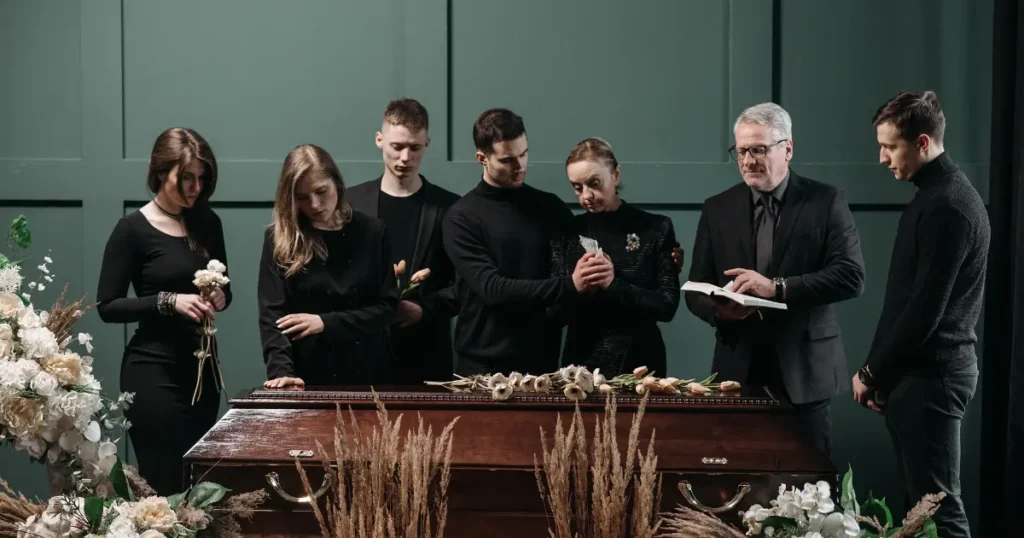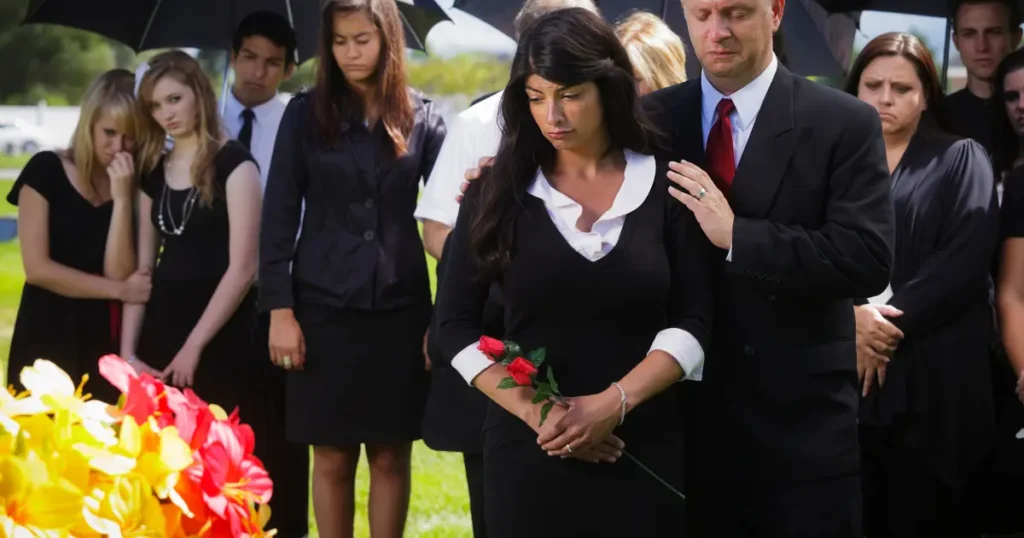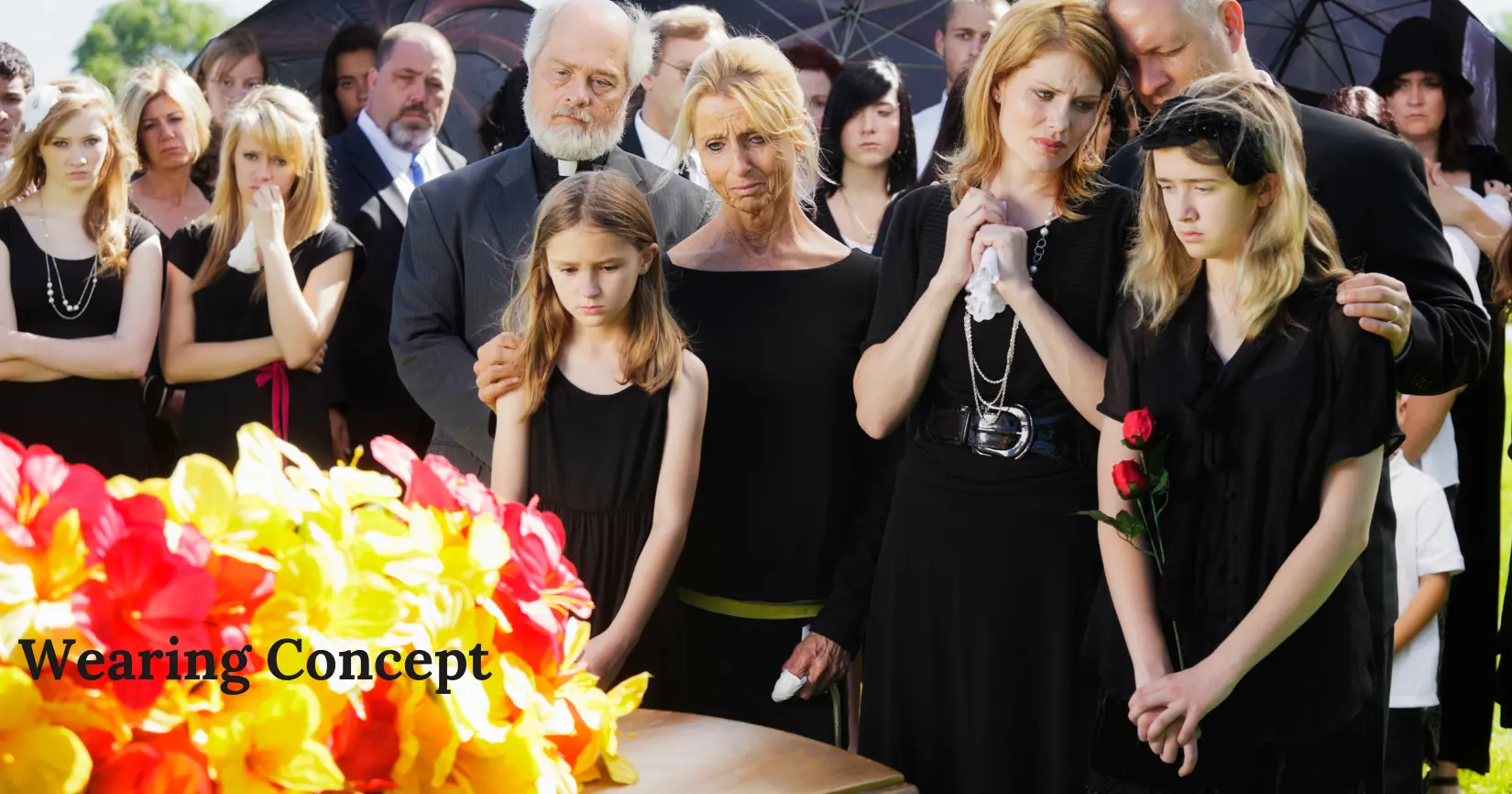Attending a funeral is a solemn occasion, and what you wear reflects the respect and sensitivity you have for the event and those grieving. This guide will provide comprehensive advice on what women should consider when selecting their funeral attire, ensuring that you present yourself appropriately for the occasion.
Why Does Funeral Attire Matter?

Funeral attire is more than just clothing; it’s a sign of respect for the deceased and their family. Wearing appropriate clothing demonstrates empathy, understanding, and a willingness to honor the traditions of the occasion.
Respect and Tradition
Funerals are often steeped in tradition, with many families following specific dress codes that reflect their cultural or religious beliefs. Dressing appropriately shows that you respect these traditions, even if they differ from your own.
Comfort and Practicality
While respect is paramount, comfort and practicality are also important considerations. Funerals can involve standing, walking, and sitting for extended periods, so your clothing should be comfortable while remaining respectful.
Traditional Funeral Attire for Women
Traditional funeral attire for women typically involves conservative, understated clothing. The goal is to avoid drawing attention to oneself, allowing the focus to remain on the purpose of the gathering.
Dresses and Skirts
- Knee-length or longer: Dresses and skirts should ideally be knee-length or longer, avoiding anything too short or revealing.
- Simple designs: Choose dresses and skirts with simple designs, avoiding bold patterns or bright colors.
- Dark colors: Black is the most common color for funeral attire, but other dark, muted colors like navy, charcoal, and deep purple can also be appropriate.
Blouses and Tops
- Long sleeves: Long-sleeved blouses or tops are generally preferred, especially in more traditional settings.
- High necklines: Choose tops with high necklines to avoid showing too much skin.
- Solid colors: Stick to solid, dark colors, and avoid anything overly bright or patterned.
Pant Suits
- Tailored fit: A well-tailored pantsuit in a dark color can be a respectful and appropriate choice.
- Neutral colors: Stick to black, navy, or dark grey, and pair with a modest blouse underneath.
How to Choose the Right Colors
Color is an important aspect of funeral attire, with certain colors traditionally associated with mourning and respect.
Black: The Traditional Choice
Black is the most traditional color for funeral attire, symbolizing mourning, respect, and solemnity. It’s a safe and widely accepted choice across many cultures and religions.
Alternative Colors
While black is traditional, other colors can also be appropriate:
- Navy: A dark navy suit or dress can be a good alternative to black.
- Charcoal grey: This color is another muted option that conveys respect and solemnity.
- Deep purple: In some cultures, deep purple is associated with mourning and can be worn to funerals.
Colors to Avoid
- Bright colors: Bright colors like red, yellow, or pink should generally be avoided as they can be seen as disrespectful.
- Bold patterns: Loud patterns can also draw attention away from the purpose of the gathering and should be avoided.
What to Wear to a Funeral in Different Seasons
Funerals can occur at any time of the year, and your attire should be suitable for the season while still respecting the occasion.
Spring and Summer
- Light fabrics: Choose lightweight, breathable fabrics like cotton or linen.
- Layers: Consider layering a light cardigan or shawl over your outfit for a more formal appearance.
- Avoid bare shoulders: If wearing a sleeveless dress or top, bring a cover-up like a shawl or jacket.
Fall and Winter
- Warm fabrics: Opt for heavier fabrics like wool, tweed, or knits to stay warm.
- Long coats: A long, dark coat can be both practical and respectful.
- Dark tights: Pair dresses or skirts with dark tights for added warmth.
Cultural and Religious Considerations

Different cultures and religions have unique customs regarding funeral attire. Understanding and respecting these customs is crucial when attending a funeral from a culture or religion different from your own.
Christian Funerals
- Black attire: Black is the traditional color for Christian funerals, although other dark colors are generally accepted.
- Conservative dress: Modesty is important, with women typically wearing dresses or skirts of an appropriate length.
Jewish Funerals
- Modesty: Modesty is key, with women often expected to cover their arms and legs.
- Head coverings: In some Jewish communities, women may wear a head covering, such as a scarf or hat.
Muslim Funerals
- Full coverage: Women are expected to dress modestly, covering their arms, legs, and sometimes their heads.
- Dark colors: Black or dark colors are typically worn, similar to Christian funerals.
Hindu Funerals
- White attire: In Hindu culture, white is traditionally worn to funerals, representing purity and the soul’s journey.
- Modesty: Women should dress modestly, often in simple white saris or similar attire.
What Not to Wear to a Funeral
Knowing what not to wear is just as important as knowing what is appropriate. Here are some things to avoid:
Bright Colors and Patterns
Avoid bright colors and bold patterns that can distract from the solemnity of the occasion.
Casual Clothing
- Jeans: Unless explicitly stated, jeans are generally too casual for a funeral.
- T-shirts: T-shirts, especially those with logos or slogans, should be avoided.
- Athletic wear: Sneakers, leggings, and other athletic wear are not appropriate for a funeral.
Revealing Clothing
- Short skirts: Skirts that are too short can be seen as disrespectful.
- Low necklines: Tops with low necklines should be avoided to maintain a respectful appearance.
- Bare shoulders: Unless covered by a shawl or jacket, bare shoulders are typically inappropriate.
Accessories: Do’s and Don’ts
Accessories can enhance your funeral attire, but they should be chosen carefully to maintain a respectful and subdued appearance.
Do: Wear Simple Jewelry
- Pearls: A simple strand of pearls can add a touch of elegance without being too flashy.
- Small earrings: Small, understated earrings are a good choice.
Don’t: Overdo It
- Statement pieces: Large, bold jewelry can be distracting and inappropriate for the occasion.
- Bright colors: Avoid accessories with bright colors or excessive sparkle.
Footwear: Choosing the Right Shoes
Footwear is an important part of your funeral attire, as it should be both respectful and practical.
Closed-Toe Shoes
Closed-toe shoes are generally preferred for funerals, as they are more formal and appropriate for the occasion.
Flats or Low Heels
- Comfort: Since funerals can involve a lot of standing and walking, comfortable shoes are essential.
- Low heels: If you prefer heels, choose ones with a low heel to maintain both comfort and formality.
Avoid: Casual Footwear
- Sneakers: Unless specified, sneakers are generally too casual for a funeral.
- Sandals: Open-toe sandals are usually considered too informal.
How to Dress Children for a Funeral
Dressing children for a funeral requires a balance of comfort and respect, with considerations for their age and the solemnity of the occasion.
Simple and Modest Clothing
- Dark colors: Like adults, children should wear dark or muted colors to a funeral.
- Comfortable fabrics: Choose soft, comfortable fabrics that won’t irritate them during the event.
Age-Appropriate Attire
- Boys: A simple dark suit or dress pants with a shirt and tie is appropriate.
- Girls: A modest dress or skirt and blouse in dark colors works well.
Avoid: Bright or Playful Attire
- Cartoon prints: Clothing with cartoon characters or playful prints should be avoided.
- Bright colors: Stick to dark or neutral colors to maintain a respectful appearance.
Conclusion
Choosing what to wear to a funeral as a woman involves balancing respect, tradition, and comfort. By opting for dark, muted colors, modest cuts, and simple accessories, you can ensure that your attire honors the solemnity of the occasion while adhering to cultural and religious norms.
Whether you are attending a funeral in the summer or winter, or navigating specific cultural expectations, this guide provides a comprehensive overview to help you make the appropriate choices. Remember, the most important aspect of funeral attire is to show respect for the deceased and their family, allowing your presence to be a source of comfort rather than distraction.
This guide aims to provide clarity and confidence as you navigate the often-unfamiliar territory of funeral attire, ensuring that you can attend such occasions with dignity and respect.
FAQ
Here are some frequently asked questions given below:
Can I wear a pantsuit to a funeral?
Yes, a well-tailored pantsuit in a dark color is appropriate for a funeral. It provides a respectful and modest alternative to dresses and skirts.
Is it okay to wear white to a funeral?
In Western cultures, white is generally not worn to funerals. However, in some cultures, such as Hindu and certain East Asian traditions, white is the traditional color of mourning.
What should I do if I don’t own any black clothing?
If you don’t have black clothing, opt for other dark, muted colors like navy, charcoal, or deep green. The key is to avoid bright colors and bold patterns.
Are open-toed shoes acceptable at a funeral?
Closed-toe shoes are generally preferred, as they are more formal and appropriate. If you wear open-toed shoes, make sure they are conservative and not too casual.
Can I wear jewelry to a funeral?
Yes, you can wear jewelry, but it should be simple and understated. Avoid large, flashy pieces and stick to classics like small earrings or a simple strand of pearls.
